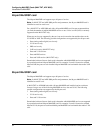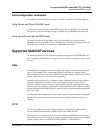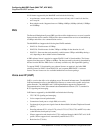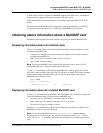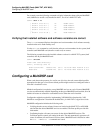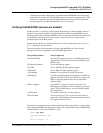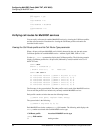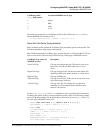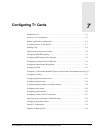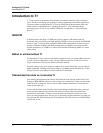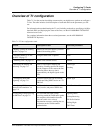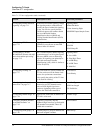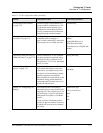
6-10 Preliminary May 9, 2000 APX 8000/MAX TNT/DSLTNT Physical Interface Configuration Guide
Configuring MultiDSP Cards (MAX TNT, APX 8000)
Configuring a MultiDSP card
Viewing call-routing database entries
Unlike the Call Route profiles, entries in a call-routing database are created for the analog
modem service, digital service, and for each licensed MultiDSP service.
When a card comes up, the MAX TNT or APX 8000 unit creates a call-routing database. The
number of database entries created per service depend on the following:
• Type (48-port or 96-port) of MultiDSP card being used.
• Enabled MultiDSP services. (Analog modem service is always enabled.)
A call route entry is created for each available port and each enabled service. To view the
entries in the call-routing database, use the callroute -a command.
Note: For the 48-port MultiDSP card, only the 48 odd-numbered ports are available (port 1,
3, 5, ..., 95).
For example, if a 48-port MultiDSP card is installed in slot 5 of the MAX TNT and the
supported MultiDSP services are data (analog modem and digital) and PHS, 48 call route
entries are created for analog modem service, 48 call route entries are created for digital
service, and 48 call route entries are created for PHS service:
admin> callroute -a
1:05:01/0 0 0:00:00/0 voice-call-type 0 0
1:05:03/0 0 0:00:00/0 voice-call-type 0 0
...
1:05:95/0 0 0:00:00/0 voice-call-type 0 0
1:05:01/0 1 0:00:00/0 digital-call-type 0 0
1:05:03/0 1 0:00:00/0 digital-call-type 0 0
...
1:05:95/0 1 0:00:00/0 digital-call-type 0 0
1:05:01/0 2 0:00:00/0 phs-call-type 0 0
1:05:03/0 2 0:00:00/0 phs-call-type 0 0
...
1:05:95/0 2 0:00:00/0 phs-call-type 0 0
Verifying that configurations are correct for related services
Each MultiDSP service might require additional configuration for setting up that service on the
unit. For additional information and procedures, see the configuration guides listed under
“Documentation set” on page xxi and the latest release note.
Adding an additional MultiDSP service
To enable an additional MultiDSP service, you must perform the following steps:
1 The unit must have the proper software license for the desired service. For further
information about adding MultiDSP software licenses, contact your Lucent Sales
Representative.
2 Once the unit is licensed for the new service, delete the existing profiles for MultiDSP
cards installed in the unit, and bring up the current profiles (that now include the new
license).
For example, if you want to delete the profiles and then bring up the current profiles for a
card installed in slot 5, enter the following commands:



